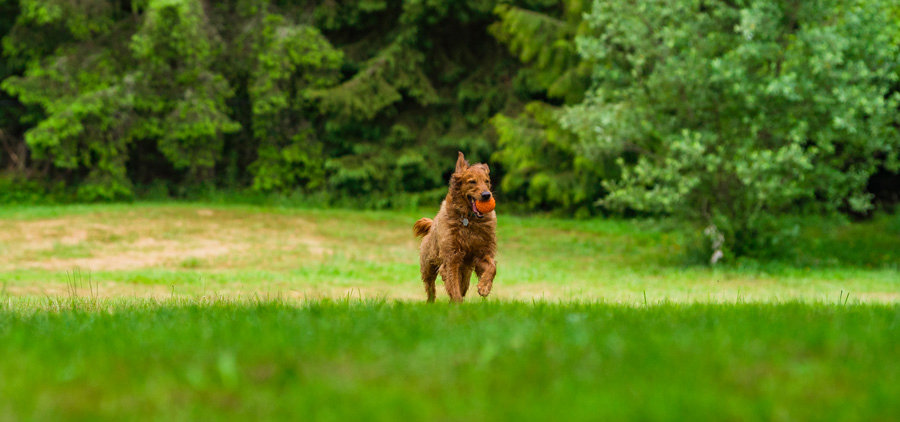American Staffordshire Terrier: Your Complete Guide

Think American Staffordshire Terriers are tough? Think again. While their muscular build might intimidate some, these dogs are known for their playful and loyal personalities. This guide draws on the experience of nearly 10,000 AmStaff owners to reveal the truth about this often misunderstood breed. Want to learn more about caring for an American Staffordshire Terrier? You're in the right place.
Originally bred in the United Kingdom for baiting bulls, fighting, and hunting beginning in the 1800s, AmStaffs have evolved into smart, confident, good-natured companions. Today, they’re known as gentle, playful lovers, making them a wonderful breed for many families.
In this post, we share insights from almost 10,000 Sniffspot users, offering practical advice for new and prospective American Staffordshire Terrier owners. Whether you’re considering owning or rescuing an American Staffordshire Terrier yourself or already have one, you’ll find valuable tips on how to care for and enjoy life with this affectionate breed.
As Sniffspot user Kassie says, “I love how she has endless energy and love.”
Meet the American Staffordshire Terrier
- American Staffordshire Terrier Quick Characteristics
- About American Staffordshire Terriers
- American Staffordshire Terrier History and Origin
- What Were American Staffordshire Terriers Bred For?
- Are American Staffordshire Terriers the Same as Pitbulls?
- American Staffordshire Terrier Traits and Characteristics
- What to Expect as an American Staffordshire Terrier Dog Owner
- Grooming Needs | Low-Maintenance
- Exercise Needs | Moderate
- Diet and Nutrition
- Breed Health Concerns
- How Friendly Are American Staffordshire Terriers?
- How to Train an American Staffordshire Terrier
- What Do Owners Love About American Staffordshire Terriers?
- What Are the Biggest Challenges for American Staffordshire Terrier Owners?
- Is an American Staffordshire Terrier Right for a First-Time Dog Owner?
- American Staffordshire Terrier Breed Restrictions and Insurance Guidelines
- Advice for American Staffordshire Terrier Owners
- Frequently Asked Questions about the American Staffordshire Terrier
- Resources for American Staffordshire Terrier Owners

Source: Sniffspot Community Breed Survey 2024
Key Takeaways
- AmStaffs are loving family dogs: Known for their playful and loyal personalities, American Staffordshire Terriers thrive on human interaction and make wonderful companions for families willing to invest in training and socialization.
- Training and socialization are key: Early and consistent socialization with various people, places, and other animals is crucial for a well-adjusted AmStaff. Positive reinforcement techniques are most effective with this intelligent breed.
- Responsible ownership requires preparation: Research potential breed restrictions in your area and be prepared to advocate for your AmStaff. Understand their specific health needs and ensure they receive adequate exercise and mental enrichment.
American Staffordshire Terrier: At a Glance
- Breed Type: Terrier
- Size: Medium
- Life Expectancy: 12 – 15 years
- Healthy Weight Range: 40 – 70 lbs
- Height Range: 13 – 16 in
- Temperament: Playful, Friendly, Loyal
- Coat Type: Short and smooth
- Color: White, tan, black, brown, mixed
Getting to Know the American Staffordshire Terrier
According to 452 Sniffspot community users who shared real-world data about their American Staffordshire Terrier, we learned these dogs are playful, friendly, and loyal. Unlike barkless breeds, AmStaffs may be vocal, but they’re not typically excessive barkers.
The American Staffordshire Terrier is very friendly and social with strangers and very friendly and social with children. When living with an American Staffordshire Terrier, 81% of our owners said a large house with a fenced yard is the best environment. Additionally, 32% of owners said an apartment or condominium with regular walks is also acceptable.
This AKC breed is moderately trainable and learns commands with consistent training. Owners say the American Staffordshire Terrier learns best with positive reinforcement (treats, praise, rewards), consistent daily training routines, and the use of training aids (e.g., harnesses, leashes, training collars).
When it comes to exercise, 46% of Sniffspot owners say their American Staffordshire Terrier benefits from moderate amounts of exercise, like regular walks and play sessions. The Sniffspot American Staffordshire Terrier community would recommend this dog breed to first-time dog owners, though prospective owners should be aware of potential breed restrictions in some areas.
Physical Characteristics of the American Staffordshire Terrier
The American Staffordshire Terrier is a medium-sized dog with a sturdy, muscular build. Don't let their powerful appearance intimidate you—they are known for their playful and affectionate personalities. If you're curious to see these dogs in action, check out some of the dog parks available on Sniffspot.
Size and Weight
American Staffordshire Terriers typically stand between 17 and 19 inches tall at the shoulder, with females often slightly shorter than males. Their weight ranges from 40 to 70 pounds, reflecting their dense, powerful musculature. This compact size makes them adaptable to various living situations, from houses with yards to apartments, provided they receive adequate exercise and opportunities to socialize with other dogs at designated dog parks.
Coat and Color
AmStaffs have a short, smooth, low-maintenance coat. A quick brush every so often helps minimize shedding and keeps their coat healthy and gleaming. These dogs sport a wide variety of coat colors, including white, tan, black, brown, and a range of attractive mixes. While the breed standard accepts many colors, some, like liver or black-and-tan, and those with predominantly white markings (over 80%), might be less common among show dogs. Of course, coat color doesn't affect an AmStaff's wonderful temperament. For more information on dog breeds and their characteristics, browse the resources available on Sniffspot's dog names section.
History of the American Staffordshire Terrier
Originally bred in England for blood sports like bull-baiting, these dogs were crossed with terriers to enhance their agility and fighting prowess. Despite their fighting origins, they were selectively bred to be human-friendly, as dogs that harmed people during fights were eliminated. When these dogs arrived in the United States, they were used for fighting but also found roles as versatile working dogs on the new American frontier.
The divide between the American Staffordshire Terriers and the American Pit Bull Terrier breeds became formalized in the early 20th century. While the American Kennel Club (AKC) initially rejected the pit bull for registration due to its association with fighting, it eventually recognized the breed under the name “American Staffordshire Terrier” in 1936.
This name change was meant to distance the breed from its fighting past. Over time, the American Staffordshire Terrier and the American Pit Bull Terrier diverged, with the AKC officially distinguishing them by adding “American” to the name. Today, the American Staffordshire Terrier is a recognized breed with a distinct lineage, while the term “Pit Bull” remains more general and sometimes includes American Staffordshire Terriers in non-AKC registries.
While pit bulls were bred for gameness and vary greatly in appearance, Staffies were selectively bred for a consistent appearance and overall soundness. Despite their different paths, Staffies have retained their deep affection for humans, a trait rooted in their history with people.
Why Was the American Staffordshire Terrier Bred?
The American Staffordshire Terrier has quite the tail to tell! These muscular pups got their start in 19th century Birmingham, England, where they were originally bred for ratting (keeping those pesky vermin in check) and, unfortunately, dog fighting. But don’t let that rough start fool you – these dogs have come a long way!
Back in the day, clever breeders mixed old-type Bulldogs with various terrier breeds, creating a strong, agile, and determined dog. These hard-working pooches earned their kibble in butcher shops and slaughterhouses, where their strength and smarts made them invaluable teammates.
When these four-legged friends made their way to American shores in the 1870s, U.S. breeders had a different vision in mind. They wanted to supersize these pups just a bit and focus on creating the ultimate family companion. Think of it as an extreme makeover, dog edition! They carefully selected for more even-tempered, friendly personalities while keeping all that signature AmStaff charm.
Fast forward to today, and modern American Staffordshire Terriers are total showstoppers – literally! They’re bred primarily as loving family companions and show dogs, though many still flex their athletic muscles in dog sports like agility, obedience, and weight pulling. While they’ve kept their working-dog determination and loyalty (once an AmStaff sets their mind to something, good luck changing it!), these days they’re more likely to be found snuggling on the couch or showing off their skills in the dog park than doing any heavy lifting.
Am Staffs and Pit Bulls: The Same?
While the American Staffordshire Terrier and the American Pit Bull Terrier share common ancestors, they are now considered separate breeds. The American Kennel Club (AKC) recognizes the AmStaff as a distinct breed, while the term “Pit Bull” remains more general and sometimes includes American Staffordshire Terriers in non-AKC registries.
It’s important to note the differences between the American Staffordshire Terrier and the Staffordshire Bull Terrier. While both are sometimes referred to as “Staffies,” the Staffordshire Bull Terrier is a British breed that is typically smaller and more compact than the AmStaff. The AmStaff stands 17-19 inches tall, while the Staffordshire Bull Terrier is usually 14-16 inches tall.
American Staffordshire Terrier Traits and Temperament
We compiled Sniffspot community submissions on their own dog breeds to determine these American Staffordshire Terrier dog traits and characteristics:
- Temperament: Playful, Friendly, Loyal,
- Energy Level: Moderate
- Trainability: Moderately trainable
- Grooming needs: Low maintenance
- Good with Kids: Very friendly and social with children
- Good with Other Pets: Can be aggressive or fearful towards other pets
AmStaffs are known for their glossy coat and muscular build. They have a short, stiff coat that’s easy to maintain, unlike long-haired breeds that require more intensive grooming. Their coat contributes to their distinctive appearance and adds to their appeal as a low-maintenance breed in terms of grooming.
Temperament with Other Dogs
While American Staffordshire Terriers are generally friendly, it's important to remember that even well-socialized dogs can sometimes display dog aggression. Early socialization is key. Introduce your AmStaff to a variety of dogs and environments starting in puppyhood. Positive reinforcement training can also help manage any potential issues. Even with training and socialization, it's best to supervise your AmStaff around other dogs, especially unfamiliar ones. This cautious approach helps ensure everyone's safety and prevents potential conflicts. Remember, each dog is an individual, and while the breed is generally friendly, responsible ownership includes managing potential dog-to-dog interactions. For safe and controlled socialization opportunities, consider using a platform like Sniffspot to find private dog parks in your area.
Temperament with Other Animals
AmStaffs can be a bit of a mixed bag when it comes to other animals. While many AmStaffs coexist peacefully with other pets in the home, some may exhibit aggression or fear towards unfamiliar animals. This can be especially true with smaller animals that trigger their prey drive. Early socialization with a variety of animals can help, but it's essential to always supervise interactions and ensure all pets have a safe space to retreat if needed. If you're considering adding an AmStaff to a multi-pet household, gradual introductions and positive reinforcement training are your best tools for a harmonious environment. Connecting with other AmStaff owners on platforms like Sniffspot can provide valuable insights and support.
Temperament with People
The American Kennel Club describes AmStaffs as "smart, confident, and good-natured companions," and that rings true for many owners. They're known for their loyalty and affection towards their families, often forming especially strong bonds with children. This breed thrives on human interaction and enjoys being involved in family activities. However, like all dogs, early socialization is important to ensure they develop into well-adjusted adults. Exposing your AmStaff to various people and situations from a young age helps them become comfortable and confident in different environments. This breed's affectionate nature and love for their families make them wonderful companions for those willing to invest in training and socialization. Our own Sniffspot community echoes this sentiment, with many users describing their AmStaffs as playful, friendly, and loyal. For tips on training and socialization, check out resources like Sniffspot's guide to top dog trainers.
Owning an American Staffordshire Terrier: What to Expect
As an American Staffordshire Terrier owner, it’s important to know the best dog breed tips as well as expectations from current American Staffordshire Terrier owners. Understanding the breed standards set by the American Kennel Club can help you provide the best care for your AmStaff.

Source: Sniffspot Community Breed Research 2024
Grooming Your Am Staff
American Staffordshire Terrier dogs require low-maintenance grooming. This means American Staffordshire Terrier owners should expect minimal grooming, like occasional brushing and baths. AmStaffs have a short and smooth coat, ideal for easy maintenance. Their coat is considered moderate shed, which is less than many long-haired breeds.
To keep your American Staffordshire Terrier’s coat healthy and up to breed standards, commit to occasional baths and weekly brushing. Of the various kinds of coat maintenance for common breeds in the terrier group, the coat grooming needs for American Staffordshire Terriers are considered low maintenance. Their short, stiff coat typically only needs a quick brush to remove loose hair and maintain its glossy appearance.
Exercise Needs of an Am Staff
American Staffordshire Terriers require moderate activity each day. Though one of the most popular dog breeds, Staffies are considered a relatively athletic, high-energy breed, requiring a great deal of exercise.
Staffies make great pets, and they thrive with between 1-2 hours of activity each day, including walks and active play sessions. Owners of Staffies report their dogs especially love playing with squeaky toys, chasing/playing with a ball or frisbee, and tug-of-war.
When medium breeds like Staffies don’t get sufficient exercise, they’re more likely to act out on undesirable behaviors like barking, reactivity, and chewing. They need consistent training, mental activity, and regular moderate exercise to avoid falling into bad habits. A well-socialized AmStaff with proper exercise is less likely to develop behavioral issues. Their springy gait makes them excellent jogging or running companions for active owners.
Finding the Right Exercise for Your Am Staff
Dog Parks and Sniffspot
American Staffordshire Terriers thrive in environments where they can socialize and play. Dog parks offer an excellent opportunity for them to engage with other dogs and burn off energy. If your Am Staff loves to socialize, consider booking a private Sniffspot; it’s a safe and enriching way for your dog to enjoy off-leash time in a controlled environment. Always supervise your dog closely at any dog park or public space and be mindful of their interactions with other dogs.
Many American Staffordshire Terriers also enjoy water parks for dogs, especially during warmer months.
Walks and Hikes
Daily walks are essential for an American Staffordshire Terrier. Aim for between one and two hours of activity each day, which can include walks and active play sessions. Hiking is also a great way for them to explore new environments while getting exercise.
The American Staffordshire Terrier enjoys running and makes an excellent jogging companion. Remember to keep your dog on a leash unless you are in a designated off-leash area, like a Sniffspot.
Other Activities
Beyond walks and hikes, American Staffordshire Terriers enjoy a variety of activities that stimulate their minds and bodies. Games like fetch, tug-of-war, and agility training can keep them entertained and fit. These activities not only provide exercise but also strengthen your bond with your dog.
Make sure the activities are fun and meaningful for your dog to keep them engaged. Consider working with one of the top dog trainers in your area to discover new games and activities.
Feeding Your American Staffordshire Terrier
What should you feed your American Staffordshire Terrier to keep him healthy? As a Moderate energy breed, what you feed them is important. A reported 59% of our community feed their Staffie commercial dry kibble.
With moderate exercise, Staffies should eat up to 2 cups of vet-recommended food to maintain a healthy weight of around 40 – 70 lbs. However, your American Staffordshire Terrier’s ideal weight and food depend on your pet’s sex, activity level, and age.
American Staffordshire Terrier Health
The American Staffordshire Terrier breed is most prone to skin conditions (e.g., allergies, dermatitis) and digestive issues (e.g., bloating, sensitive stomach). Above all, a reported 65% of our American Staffordshire Terrier owners reported skin conditions like allergies, yeast infections, impetigo, ringworm, alopecia, and folliculitis. Your dog’s risk for these challenges increase as they age.
Similarly, 33% reported digestive issues like constipation and lack of appetite. Lastly, 32% of American Staffordshire Terrier owners claim their dog struggles with joint problems like arthritis, elbow dysplasia, degenerative issues, and osteosarcoma — common AmStaff health concerns.
Canine hip dysplasia is another concern in this breed. Regular check-ups and maintaining a healthy weight can help manage this condition. Despite these potential health issues, AmStaffs are generally considered a healthy breed with a lifespan of 12-16 years.
If you’re worried about any of these health issues above, talk to your AmStaff’s vet.
Common Health Issues in American Staffordshire Terriers
Like all breeds, American Staffordshire Terriers have some common health concerns. Skin issues, such as allergies, dermatitis, yeast infections, impetigo, ringworm, alopecia, and folliculitis, are reported by 65% of AmStaff owners in the Sniffspot community. These types of skin problems tend to become more prevalent as dogs age. Digestive sensitivities, including bloating, sensitive stomach, constipation, and lack of appetite, affect about a third of AmStaffs, according to our Sniffspot community research. Joint problems, such as arthritis, elbow dysplasia, degenerative joint issues, and osteosarcoma, are also reported by 32% of AmStaff owners.
Lifespan and Health Considerations for AmStaffs
Despite these potential health issues, American Staffordshire Terriers generally live long, healthy lives, typically 12–16 years. Regular veterinary check-ups are essential for early detection and management of any health problems. Maintaining a healthy weight through proper diet and exercise can also help prevent conditions like canine hip dysplasia, a potential concern for this breed. Always consult with your veterinarian if you have any questions or concerns about your AmStaff's health.
Is the American Staffordshire Terrier a Friendly Breed?
Another important thing to consider when adopting a Staffie is whether or not they fit with your current family. How friendly are American Staffordshire Terriers compared to other medium-sized breeds?

Source: Sniffspot Community Breed Survey 2024
With moderate training, you can hone your Staffie’s protective instinct into loving and playful family dog. Introducing your pet to positive reinforcement (treats, praise, rewards) and consistent daily training routines early helps them avoid undesirable behaviors like reactivity and anxiety.
It’s worth noting that AmStaffs are a people-oriented dog breed. They form strong bonds with their families and are often referred to as “nanny dogs” due to their patience and gentleness with children.
Our community American Staffordshire Terrier owners comment on their pet’s friendliness:
- “Very friendly and loving. Wants to learn and please. Very easy to command. Overall best breed in my opinion.” (Christen)
- “He’s incredibly loyal and very friendly. Although bully breeds may have a negative reputation, he’s been snapped at by other dogs and remains neutral and friendly.” (Caitlyn)
Training Your American Staffordshire Terrier
Whether you’re adopting a Staffie puppy or a grown American Staffordshire Terrier adult, training is a large part of owning a medium breed. When you fail to train your Staffie properly, they’re more likely to display undesirable behaviors like reactivity, anxiety, and so on. Providing stimulating activities is a great first step, but this needs to be paired with the right training for your Staffie.
As a terrier breed, American Staffordshire Terriers benefit from praise and positive reinforcement. Here’s what our Staffie community recommended based on their experience with their own dogs:
- Positive Reinforcement (94%): This includes treats, praise, rewards, and so on for positive behavior.
- Consistent Routines (55%): A consistent training routine allows your pet to get comfortable with expectations.
- Training Aids (45%): Dog training aids like martingale collars, walking harnesses, and no-pull attachments.
As dogs bred for baiting bulls, fighting, and hunting, Staffies are considered moderately trainable, often benefiting from a professional trainer.
Importance of Early Socialization
Early socialization is key for American Staffordshire Terriers. It’s worth noting that AmStaffs are a people-oriented dog breed. They form strong bonds with their families and are often referred to as “nanny dogs” due to their patience and gentleness with children. Exposing them to a variety of people, places, and situations from a young age helps them develop into well-adjusted adults. This includes meeting other dogs and animals in safe, controlled environments, like a Sniffspot.
Positive experiences during puppyhood build confidence and reduce the likelihood of fear-based behaviors later on. Introducing your pet to positive reinforcement (treats, praise, rewards) and consistent daily training routines early helps them avoid undesirable behaviors like reactivity and anxiety. Early socialization sets the stage for a happy and well-behaved companion. With moderate training, you can hone your Staffie’s protective instinct into a loving and playful family dog.
Training Tips for Am Staffs
As a terrier breed, American Staffordshire Terriers benefit from praise and positive reinforcement. Here’s what our Staffie community recommended based on their experience with their own dogs:
- Positive Reinforcement (94%): This includes treats, praise, rewards, and so on for positive behavior. This approach builds a positive association with training and encourages desired actions.
- Consistent Routines (55%): A consistent training routine allows your pet to get comfortable with expectations. Dogs thrive on predictability, so regular training sessions help them understand what's expected.
- Training Aids (45%): Martingale collars, walking harnesses, and no-pull attachments can be helpful tools, especially when teaching leash manners. If you're considering using specific training tools, consult with a professional dog trainer for guidance.
AmStaffs are intelligent and eager to please, but they can also be strong-willed. Enlisting the help of a qualified trainer can provide valuable guidance and ensure that training is effective and humane. As dogs bred for baiting bulls, fighting, and hunting, Staffies are considered moderately trainable, often benefiting from a professional trainer. Remember, patience and consistency are key to success with any training program. Providing stimulating activities is a great first step, but this needs to be paired with the right training for your Staffie.
Why Am Staff Owners Love Their Dogs
We asked Sniffspot Staffie dog owners what they love the most about their American Staffordshire Terrier pups, and here’s what they had to say:
- “My dog is super sweet with the family, and she loves walks.” (Chelsea)
- “This breed is intelligent and truly wants to be integrated into their human’s lives.” (Alisa)
- “He is so affectionate and loyal. He can be left alone for hours, or cuddle up right next to me. He’s down for anything I ask of him and he’s just the ultimate love bug. There is nothing like his love and big goofy smile.” (Cailey)
- “I love how adaptable my AmStaff is. Whether we’re lounging at home or out for a run, he’s always up for anything. His coat is so easy to maintain too – just a quick brush and he looks show-ready!” (Mark)

Celine Druguet on Unsplash
Challenges of American Staffordshire Terrier Ownership
Similarly, Staffie owners shared some of the biggest challenges of living with an American Staffordshire Terrier:
- “Despite years of trying to train and desensitize, still very much hates other dogs and cannot be distracted in the moment.” (Chelsea)
- “His weariness of other dogs makes it hard to go to parks or out to dog-friendly spaces.” (Scierra)
- “Anxiety and skin sensitivity. Also everyone is scared of her so she is in turn scared…” (Kassie)
- “Dealing with breed-specific legislation and breed restrictions can be challenging. Some landlords and insurance companies have policies against ‘pit bull type’ dogs, which often includes AmStaffs.” (Rachel)
- “As a controversial breed, we sometimes face prejudice from people who don’t understand the breed. Education and advocacy are a big part of being an AmStaff owner.” (Tyler)
Am Staffs and First-Time Owners: A Good Fit?

Source: Sniffspot 2024 Community Dog Breed Survey
According to 58% of our Sniffspot community, American Staffordshire Terriers are a great first-time dog. This comes from their needs and moderate exercise needs.
While AmStaffs can make great pets for first-time owners, it’s important to be aware of potential breed bans or restrictions in your area. Their breed popularity has led to some misconceptions, so first-time owners should be prepared to be ambassadors for the breed.
American Staffordshire Terrier owners say it best:
- “High energy working breed, loves pleasing but needs consistent stimulation and exercise for 2-3 hours a day. On the plus side, she also loves being a couch, potato, and snuggling whenever you’re not walking.” (Kelly)
- “Mine is very protective if there is any off-leash dog.” (Mollie)
- “Affectionate and loving. We have two who are service dogs and they are truly amazing!” (Lisa)
American Staffordshire Terrier Breed Restrictions & Insurance
Owning an American Staffordshire Terrier (AmStaff) comes with some unique considerations. While these dogs make wonderful family pets, their classification among restricted dog breeds can affect everything from housing to insurance coverage. Here’s what potential AmStaff owners need to know about breed-specific restrictions.
Homeowners Insurance for Am Staff Owners
Many homeowners insurance companies include American Staffordshire Terriers on their restricted breed list. This can mean higher insurance premiums or even coverage denials. However, several major insurance providers like State Farm and Farmers Insurance offer breed-neutral policies, evaluating each dog based on behavior rather than breed. When shopping for AmStaff-friendly insurance, always disclose your dog’s breed and ask specifically about their policies regarding American Staffordshire Terriers.
Housing Restrictions for American Staffordshire Terriers
Finding pet-friendly housing with an AmStaff requires extra planning. Many apartments and rental properties have breed restrictions that affect American Staffordshire Terriers. Successful AmStaff owners often prepare a “pet resume” including:
- Canine Good Citizen certification (by the American Kennel Club)
- Training class certificates
- Vet references
- Pet insurance documentation
- Photos of your AmStaff in family settings
Breed-Specific Legislation and Am Staffs
Local breed-specific laws can impact where you can live with your AmStaff. Some cities maintain restrictions on American Staffordshire Terriers, including:
- Mandatory muzzling in public areas
- Special licensing requirements
- Additional insurance requirements
- Restricted access to dog parks (not including private dog parks)
The landscape for American Staffordshire Terrier ownership is improving as more dog-friendly cities and insurance companies move toward behavior-based policies rather than breed restrictions. A well-trained AmStaff can help demonstrate why these loyal, family-friendly dogs deserve to be judged on their individual merits rather than breed stereotypes.
Tips for American Staffordshire Terrier Owners
Luckily, our Sniffspot community is full of experienced, trustworthy Staffie owners. These American Staffordshire Terrier breed owners share the most essential dog breed tips and advice for prospective or new dog owners:
Advocate for Your Am Staff
- “Be a good advocate for this misunderstood breed by going above and beyond with training and courtesy to others.” (Carey)
- “Be aware and prepared for people to misunderstand your thick-headed bully breed! Also be prepared to advocate for them.” (Caitlyn)
- “You have to understand that this breed gets a bad rap so you need to be sure to protect them from people and be strong enough to show people your dog is under control. You need to always be in control of the dog and control the people around you. He/She can’t speak for himself so the job is tougher. You need to be their advocate.” (Michelle)
Early Socialization for Your Am Staff
- “Socialize them with people and other animals as much as possible from a very young age.” (Cheyenne)
- “If you have a puppy definitely socialize while they are 8-16 weeks. If you have an adult dog; learn about enrichment activities and outlets for their high energy.” (A.B.)
Managing Skin Allergies in Your Am Staff
- “Start training and socializing EARLY and address any possible allergies as early as possible.” (Andrea)
- “Get pet insurance, these dogs are likely going to have allergies of some kind that will be expensive to treat over the years!” (Vic)
Understand the breed’s history and needs.
- “Remember that AmStaffs are different from Staffordshire Bull Terriers and Pitbull Terriers, even though they’re often confused. Understanding your dog’s specific breed characteristics will help you provide the best care.” (Samantha)
- “Invest in sturdy toys and gear. Their powerful jaws can make quick work of flimsy toys!” (Mike)
- “Don’t let the ‘tough dog’ image fool you. These are sensitive, affectionate dogs that thrive on human companionship. They’re not suited to being left alone for long periods.” (David)
Make sure this is the right breed for you.
- “You need patience and diligent training, but you’ll have the best dog on earth if you do that. Impossible not to fall in love with their goofy behaviors and loving energy.” (Sarah)
- “AmStaffs are strong dogs. Make sure you’re physically capable of handling them, especially during the teenage months when they might test boundaries.” (Lisa)
- “Do it! Do it but be ready to advocate for your dog. A lot of pitties have traumatic backgrounds and it’s our job as owners to make sure they are safe and respected. Some pitties are dog/people aggressive but that doesn’t make them bad dogs. They just need someone to help them set their boundaries. Some pitties love dogs and people and it’s our job to put them in an environment where they can be loved.” (Mary)
Frequently Asked Questions about the American Staffordshire Terrier
American Staffordshire Terrier Lifespan
The average lifespan of an American Staffordshire Terrier is typically between 12 – 15 years years.
American Staffordshire Terrier Size
An adult American Staffordshire Terrier weighs between 40 – 70 lbs and stands between 17 – 19 inches tall at the shoulder. This makes them slightly larger than their British cousins, the Staffordshire Bull Terriers, who typically stand 14 – 16 inches tall.
Grooming Your American Staffordshire Terrier
American Staffordshire Terriers require low maintenance grooming. Their short, stiff coat is one of the easiest canine coats to maintain. Regular grooming helps to keep their coat healthy and manageable. AmStaffs have a short coat, which is well-suited for protection from the elements. They are considered moderate shedders.
To maintain your American Staffordshire Terrier’s coat, it’s important to bathe regularly and consider professional grooming once a year. However, compared to long-haired breeds, the kinds of coat maintenance required for AmStaffs are minimal.
Exercising Your American Staffordshire Terrier
American Staffordshire Terriers require moderate activity each day. Though one of the most popular dog breeds, Staffies are classified as a moderately athletic, somewhat high-energy breed.
Staffies are excellent companions and flourish with between 1-2 hours of activity each day, including walks and active play sessions. Owners of Staffies note that their dogs particularly enjoy chasing/playing with a ball or frisbee, playing with squeaky toys, and tug-of-war.
If medium breeds like Staffies don’t receive enough exercise, they may develop unwanted behaviors. These dogs need ongoing training, mental stimulation, and consistent exercise to channel their energy effectively.
Am Staffs and Children
According to our data, American Staffordshire Terriers are very friendly and social with children.
Am Staffs and Other Pets
Our research indicates that American Staffordshire Terriers are very friendly with other pets with other pets.
Best Food for a Healthy American Staffordshire Terrier
As a moderate energy breed, the diet of your Staffie is crucial. A significant 66% of our community feeds their Staffie commercial dry kibble.
For optimal health, Staffies should consume 1 to 3 cups of vet-recommended food to maintain a healthy weight of around 40 – 70 lbs pounds. The exact amount and type of food will depend on your American Staffordshire Terrier’s sex, activity level, and age.
Common American Staffordshire Terrier Health Issues
The American Staffordshire Terrier breed is particularly prone to digestive issues like constipation, diarrhea, vomiting, and lack of appetite and skin conditions like allergies, yeast infections, impetigo, ringworm, alopecia, and folliculitis. Our data shows that 28% of American Staffordshire Terrier owners reported digestive issues like constipation, diarrhea, vomiting, and lack of appetite. Staffie’s risk for these health issues increases as they age.
Additionally, 22% reported skin conditions like allergies, yeast infections, impetigo, ringworm, alopecia, and folliculitis. Finally, 20% of American Staffordshire Terrier owners indicated their dog struggles with joint problems like arthritis, elbow dysplasia, degenerative issues, and osteosarcoma, which are common Staffie health concerns.
Are American Staffordshire Terriers the same as Pit Bulls?
While American Staffordshire Terriers are often grouped under the general term “Pit Bull,” they are a distinct AKC breed. The term “Pit Bull” is not a specific breed but rather a category that can include American Staffordshire Terriers, American Pit Bull Terriers, and sometimes other bully breeds.
The AKC recognizes the American Staffordshire Terrier as a separate breed with its own breed standards. It’s important for owners to understand these distinctions, especially when dealing with breed-specific legislation or restrictions.
Resources for Am Staff Owners
The American Staffordshire Terrier is a wonderful breed that offers a unique combination of strength, affection, and loyalty. As a distinct AKC breed, AmStaffs have carved out their own identity separate from Staffordshire Bull Terriers and American Pit Bull Terriers, though they share common ancestors.
While their muscular build and history may intimidate some, well-socialized AmStaffs are known to be smart, confident, good-natured companions. Their glossy, short coat makes them low-maintenance in terms of grooming, especially compared to long-haired breeds.
However, prospective owners should be aware of the challenges that come with this breed, including potential breed restrictions and the need for proper socialization and training. Despite these challenges, for those willing to put in the effort, AmStaffs can be affectionate, loyal, and rewarding pets.
As with any dog, it’s crucial to understand the breed’s needs, health concerns, and characteristics before bringing an AmStaff into your home. With proper care, training, and love, an American Staffordshire Terrier can be an excellent addition to many households, bringing joy and companionship for years to come.
Whether you’re a current American Staffordshire Terrier dog owner or you’re considering adopting an AmStaff, Sniffspot is here to lend a helping hand. Here are some of the most relevant resources for American Staffordshire Terrier owners:
- Staffordshire Terrier Club of America
- Most Popular American Staffordshire Terrier Dog Names
- Bombshell Bullies Pit Rescue, Inc.
- AKC Breed Standard for American Staffordshire Terriers
Remember to check local regulations regarding breed-specific legislation, as this can affect American Staffordshire Terriers in some areas.
Sources:
“American Staffordshire Terrier Dog Breed Information.” (American Kennel Club)
Most recent articles

Labrador Retriever: Ultimate Guide by Owners
Discover the Labrador Retriever, a breed celebrated for its playful nature, affectionate temperament, and trainability. Labradors are known for their friendly demeanor and adaptability, making them perfect family companions and versatile working dogs. As one of the most popular types of retrievers, Labs are ideal companions for various lifestyles and are recognized by the American Kennel Club (AKC) as an excellent breed for families.

German Shepherd Dogs: Insights From Real Dog Owners
The German Shepherd Dog (GSDs) are known for their intelligence, loyalty, and striking appearance. They're also incredibly versatile, excelling as working dogs and devoted family companions. This guide covers everything you need to know about GSDs, from understanding their unique traits and rich history to practical advice on training and care. So, whether you're a seasoned GSD owner or just starting your research, let's explore this remarkable breed together.

Golden Retriever Advice: The Complete Owner's Guide
Golden Retrievers: they're gorgeous, playful, and incredibly popular. But before you welcome one into your home, you need the right golden retriever advice. This guide draws on the wisdom of nearly 10,000 Golden Retriever owners, offering practical tips for caring for these affectionate dogs. From understanding their high energy levels to mastering grooming and training, we'll cover everything you need to know. So whether you're already a devoted Golden parent or just starting your research, get ready to learn how to give your furry friend the best possible care.

American Staffordshire Terrier: Your Complete Guide
Think American Staffordshire Terriers are tough? Think again. While their muscular build might intimidate some, these dogs are known for their playful and loyal personalities. This guide draws on the experience of nearly 10,000 AmStaff owners to reveal the truth about this often misunderstood breed. Want to learn more about caring for an American Staffordshire Terrier? You're in the right place.

Dog Skijoring for Beginners: Gear, Training & More
Adventure is out there, and our dogs make it so much better. Ever thought about exploring the snowy trails with your furry friend through dog skijoring? It's an amazing way to combine your love for skiing with quality time spent with your pup. This guide covers everything you need to know about skijoring with dogs—from the basics and gear to training tips for a safe and fun experience. Ready to hit the slopes with your skijoring dog? Let's go!

Leash Training 101: Simple Steps for Happy Walks
Tired of walks that feel more like a wrestling match? Leash training is the secret to stress-free strolls with your furry friend. It's about more than just obedience—it's about building a stronger bond and enjoying quality time together. This guide covers everything from finding the perfect leash to mastering essential leash training techniques, even tips for leash training a puppy. Ready to transform those tug-of-war sessions into enjoyable outings for both of you?
Related articles
Top dog guides per area
Dog training guides

Dog Food Aggression: Why You Shouldn't Punish It
Does your dog ever growl when you walk by their food dish? Maybe they get possessive of treats, carrying them far away and giving you side-eye when you start to approach — or snarling at your other pets or children if they get too close.

The Ultimate Guide to Scent Training for Dogs
Your dog's nose is an amazing tool. Did you know they have 40 times the olfactory receptors than humans? Scent training for dogs taps into this superpower, turning everyday moments into exciting sniff-fests. It's enriching for all types of dogs – reactive, shy, or simply adventurous. Ready to explore the world of scent work for dogs? Let's get started.

Service Dog Training Costs: DIY vs. Pro
More than 80 million Americans rely on their service dogs to help them navigate the world. Task-trained assistance animals perform a huge range of life-changing—in many cases, life-saving—services: These dogs act as eyes for visually impaired handlers, provide mobility support, alert to seizures and blood sugar crashes, interrupt anxiety attacks, remind their people to take medications, and so much more.

How to Deal With Puppy Potty Training Regression
You thought those dreaded middle-of-the-night potty breaks were over. You were finally free from cleaning up puppy puddles. Then, suddenly, your furry friend starts having accidents again. It's frustrating, right? This puppy potty training regression is more common than you think. Don't worry; we'll help you get your pup back on track. We'll cover the common causes, offer practical solutions, and give you actionable steps to tackle this challenge together.

Dirty Dog Syndrome: Causes, Solutions, and Prevention
It's a cringe-worthy moment every dog owner dreads: your furry friend chowing down on something truly disgusting. If your dog has a penchant for poop, you're dealing with coprophagia. It's more common than you think, and thankfully, often manageable. This article explores the reasons behind dirty dog syndrome, from instinct to learned behavior. We'll also give you practical tips to help break this unpleasant habit.
Dog enrichment guides

Top 10 Dog Water Parks in the US
Do you have a water-loving dog looking to burn some energy? There are countless dog parks to visit throughout our country — but some of them become far too hot in the midday sun to be safe for your pets to play. That’s why we’ve put together a list of some of the best dog water parks throughout the United States! At these locations, your pup can frolic, splash, and swim to their heart’s content.

Best Toys for Herding Dogs: Keeping Your Pup Happy & Engaged
Herding dogs are amazing, intelligent companions. But that also means they need more than just a simple game of fetch. Finding the right toys for herding dogs is key to keeping them happy and stimulated. This article explores some of the best toys for herding dogs, including options specifically for breeds like Border Collies and Australian Shepherds. We'll help you discover the perfect herding toys for dogs to tap into their natural instincts and keep them entertained for hours.

Tough Dog Toys for Aggressive Chewers: A Practical Guide
Does your dog destroy every toy you give them? Is your house littered with the remnants of plush toys? Are you tired of wasting money on "indestructible" dog toys for aggressive chewers that don't last? Then this post is for you. We'll cover everything you need to know about finding the best dog toys for aggressive chewers, so you can finally give your pup something safe, durable, and fun.

Daily Exercise Calculator: How Much Exercise Does Your Dog Need?
Everyone knows dogs need exercise, but how much is enough? Walks are great, but creating a truly balanced fitness plan means understanding your dog's specific needs. This post helps you develop a daily exercise calculator for your dog, considering breed, age, and lifestyle. We'll cover fun activities, understanding exercise intensity, and recognizing when your pup has had enough. Let's create a plan that keeps your dog happy and healthy!

Complete Guide To Herding With Dogs
* All Sniffspot articles are reviewed by certified trainers for quality, please see bottom of article for details *
Dog reactivity guides

Rottweiler Aggression: Truth vs. Myth
Many dogs have gotten a bad reputation over the years for being "dangerous breeds." Rottweilers are among them. Like pit bulls and other large, blocky-headed types of dogs, these powerful and beautiful animals are often assumed to be aggressive.

What Is a Reactive Dog? A Practical Guide for Owners
Does your dog suddenly transform into a barking, lunging Tasmanian devil on walks? It's stressful for both of you. If this sounds familiar, you might have a reactive dog. Understanding what is a reactive dog is the first step to calmer walks. We'll explore the common triggers and give you actionable strategies to manage and modify this behavior. Let's turn those stressful walks into enjoyable outings.

How to Socialize a Reactive Dog: A Step-by-Step Guide
Does your dog display reactivity to other pets or people? Maybe they’re a new rescue pup and are still settling into your home. Or they were sick growing up, so you missed their critical socialization period. Possibly they’ve had a bad experience after being raised as a normal puppy.

What Is a Reactive Dog? A Complete Guide
Is your dog overly excited or fearful around other dogs? Do they bark, lunge, or whine? You might have a reactive dog. Many dog owners face this challenge. Understanding what a reactive dog is is the first step to helping them. This guide explores the common causes of dog reactivity, explains what makes a dog reactive, and offers practical tips and resources. Let's work together to build a stronger bond with your dog and enjoy stress-free walks.

Best Online Dog Training for Reactive Dogs: A Practical Guide
Does your dog's reactivity make walks stressful? You're not alone. Many dog owners face similar challenges. This guide offers practical advice and support for managing reactivity, including finding the best online dog training for reactive dogs. We'll connect you with reactive dog support groups, share training tips, and explore resources like the best dog training app for reactive dogs. Let's build a stronger bond with your dog, together.
* All Sniffspot articles are reviewed by certified trainers for quality, please see bottom of article for details *
Sniffspot community guides

The State of Public Dog Parks Across the United States
From 2009 to 2020, there was a 40 percent increase in the development of public dog parks. Designated spots for canine exercise have become commonplace in every major city in North America — many pet owners won’t even consider renting an apartment that doesn’t have its own fenced-in pet area for their canine companions.

How This Family is Affording Their Dream Property Through Renting it Hourly to Dogs
Thousand Oaks, California has been a safe haven for Sniffspot host, Jen, since childhood. Having grown up in busy Santa Barbara, Jen, an introvert from an early age, would seek out solitude and serenity away from tourists attractions and droves of people visiting from elsewhere. “My grandparents own 60 acres about a 30 minute drive from here, and I grew up spending every summer and every holiday visiting them on the ranch,” Jen explained. “In Santa Barbara, we wouldn't go to the beach on the weekend because that's where everybody was, so you'd find places off the beaten path where the tourists weren't. For me, the ranch was just my happy place.”

Host Tips: Ellen K. What Makes Sniffspot Successful for Me
Ellen is the host of Country Pasture Getaway, one of Sniffspot's most popular sniff spots. She has taken the time to write up the lessons she has learned about how to be a great sniff spot host.

How this Oregon Farmer is Making a Business From Renting Her Land to Dogs
Just 20 minutes outside of the busy city of Portland, Oregon, and settled right on the banks of the Columbia River, you’ll find what countless visitors have flocked to the area in search of – mountain views, crisp, clean air, and running water for miles. What you might not expect to find, however, is a hidden oasis designed just for dogs and their people, owned and operated by a farming couple and enjoyed by visitors on two legs, and four.

Host Tips: Fran T. Providing Great Guest Service at our Spot
Fran is the host of Ranch Setting, one of Sniffspot's most popular spots. She has taken the time to write up the lessons she has learned about how to be a great Sniffspot host.
Top dog trainers in the US
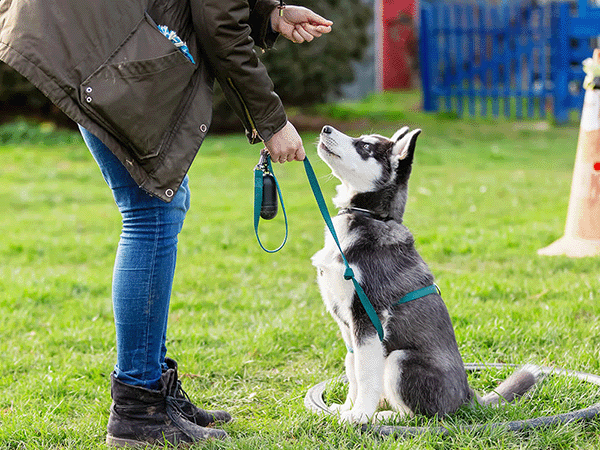
The Best Dog Trainers in the United States of 2025
This is a list of the top dog trainers in the United States, based on votes from the Sniffspot community and the general public.
The Best Dog Trainers in Seattle, WA of 2025
This is a list of the top dog trainers in Seattle, WA, based on votes from the Sniffspot community and the general public.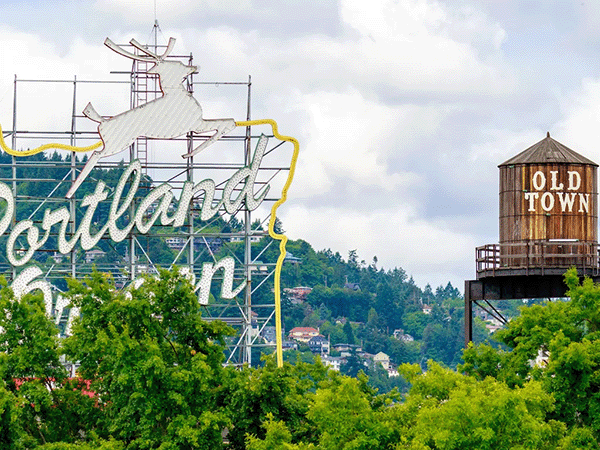
The Best Dog Trainers in Portland, OR of 2025
This is a list of the top dog trainers in Portland, OR, based on votes from the Sniffspot community and the general public.
The Best Dog Trainers in Los Angeles, CA of 2025
This is a list of the top dog trainers in Los Angeles, CA, based on votes from the Sniffspot community and the general public.
The Best Dog Trainers in New York, NY of 2025
This is a list of the top dog trainers in New York, NY, based on votes from the Sniffspot community and the general public.
City dog parks guides

Top 10 Indoor Dog Parks: A US Guide
Looking for a space to play with your dog no matter what the weather’s like outside? Look no further than our list of the best indoor dog parks in the United States! These climate-controlled spaces are growing in popularity as pet ownership increases throughout the country. As a bonus, many of them also offer dog training, boarding, grooming, or daycare services on the premises.

15 Best Dog Parks in the US: Public & Private
Searching for the best off-leash dog parks near you in the United States? Whether you're looking for public dog parks with open spaces or private, fully-fenced areas, this comprehensive guide has you covered. Discover top-rated parks across the country, plus essential tips on what to bring and what to expect for your next adventure.

Dog Parks Near Me: Las Vegas Edition
Looking for the perfect dog park near me in Las Vegas? You're in luck! This guide explores all the best options for your pup, from public dog parks to private dog parks near me on Sniffspot. We'll help you find the ideal spot for playtime, socializing, and fresh air. Plus, we'll cover essential etiquette and safety tips to ensure a happy visit for everyone. Get ready for some tail-wagging fun!

Top Sniffspot Locations: Find the Perfect Dog Park
Looking for the perfect dog park? Whether you need a wide-open public space or a private, fenced-in spot, this guide will help you find the best dog parks across the US. We'll cover top-rated public parks, the perks of private dog parks, and even explore Sniffspot locations – giving your pup a safe and fun place to play. Ready to find your dog's new favorite spot? Let's go!

Sniffspot: Portland's Best Private Dog Parks
Ready to discover Portland's best dog parks? Whether you're looking for a public park or the unique experience of a private Sniffspot, this guide has you covered. We'll help you find the perfect spot for your pup, with tips on what to bring, how to prepare, and even understanding dog body language. Plus, we'll explore some top Portland dog parks, including public and Sniffspot options, so you can plan your next dog-friendly adventure in the City of Roses.
Dogs breeds

German Shepherd Dogs: Insights From Real Dog Owners
The German Shepherd Dog (GSDs) are known for their intelligence, loyalty, and striking appearance. They're also incredibly versatile, excelling as working dogs and devoted family companions. This guide covers everything you need to know about GSDs, from understanding their unique traits and rich history to practical advice on training and care. So, whether you're a seasoned GSD owner or just starting your research, let's explore this remarkable breed together.

Labrador Retriever: Ultimate Guide by Owners
Discover the Labrador Retriever, a breed celebrated for its playful nature, affectionate temperament, and trainability. Labradors are known for their friendly demeanor and adaptability, making them perfect family companions and versatile working dogs. As one of the most popular types of retrievers, Labs are ideal companions for various lifestyles and are recognized by the American Kennel Club (AKC) as an excellent breed for families.

Golden Retriever Advice: The Complete Owner's Guide
Golden Retrievers: they're gorgeous, playful, and incredibly popular. But before you welcome one into your home, you need the right golden retriever advice. This guide draws on the wisdom of nearly 10,000 Golden Retriever owners, offering practical tips for caring for these affectionate dogs. From understanding their high energy levels to mastering grooming and training, we'll cover everything you need to know. So whether you're already a devoted Golden parent or just starting your research, get ready to learn how to give your furry friend the best possible care.

American Staffordshire Terrier: Your Complete Guide
Think American Staffordshire Terriers are tough? Think again. While their muscular build might intimidate some, these dogs are known for their playful and loyal personalities. This guide draws on the experience of nearly 10,000 AmStaff owners to reveal the truth about this often misunderstood breed. Want to learn more about caring for an American Staffordshire Terrier? You're in the right place.

Australian Shepherd Facts: Breed Info & Care Guide
Discover the Australian Shepherd, an AKC breed celebrated for its trainable, playful, and affectionate nature. Despite its name, the Australian Shepherd is actually a native breed to the United States, originally developed to breed on farms and ranches. Considered a medium dog, Australian Shepherds were bred for herding beginning in the 1950s. As one of the high-energy breeds, Aussies are known for their boundless energy and need for regular exercise, including aerobic exercise.
Top dog names in the US
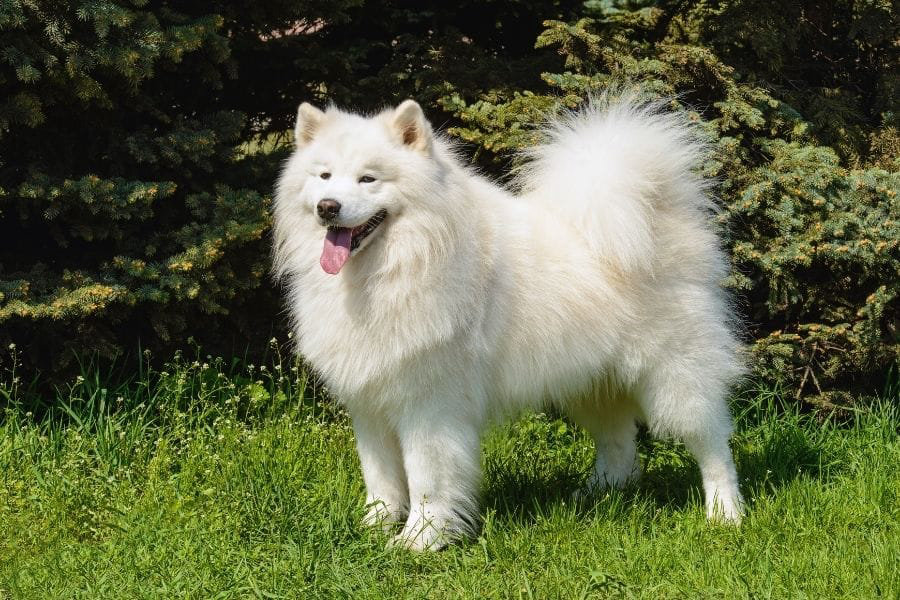
Top 1,000 Most Popular Dog Names
Looking for the perfect dog name for your new pup? We have created filterable lists of dog names from our database of hundreds of thousands of Sniffspot users. You can filter by gender, breed and state to find the most cute, unique and creative dog names.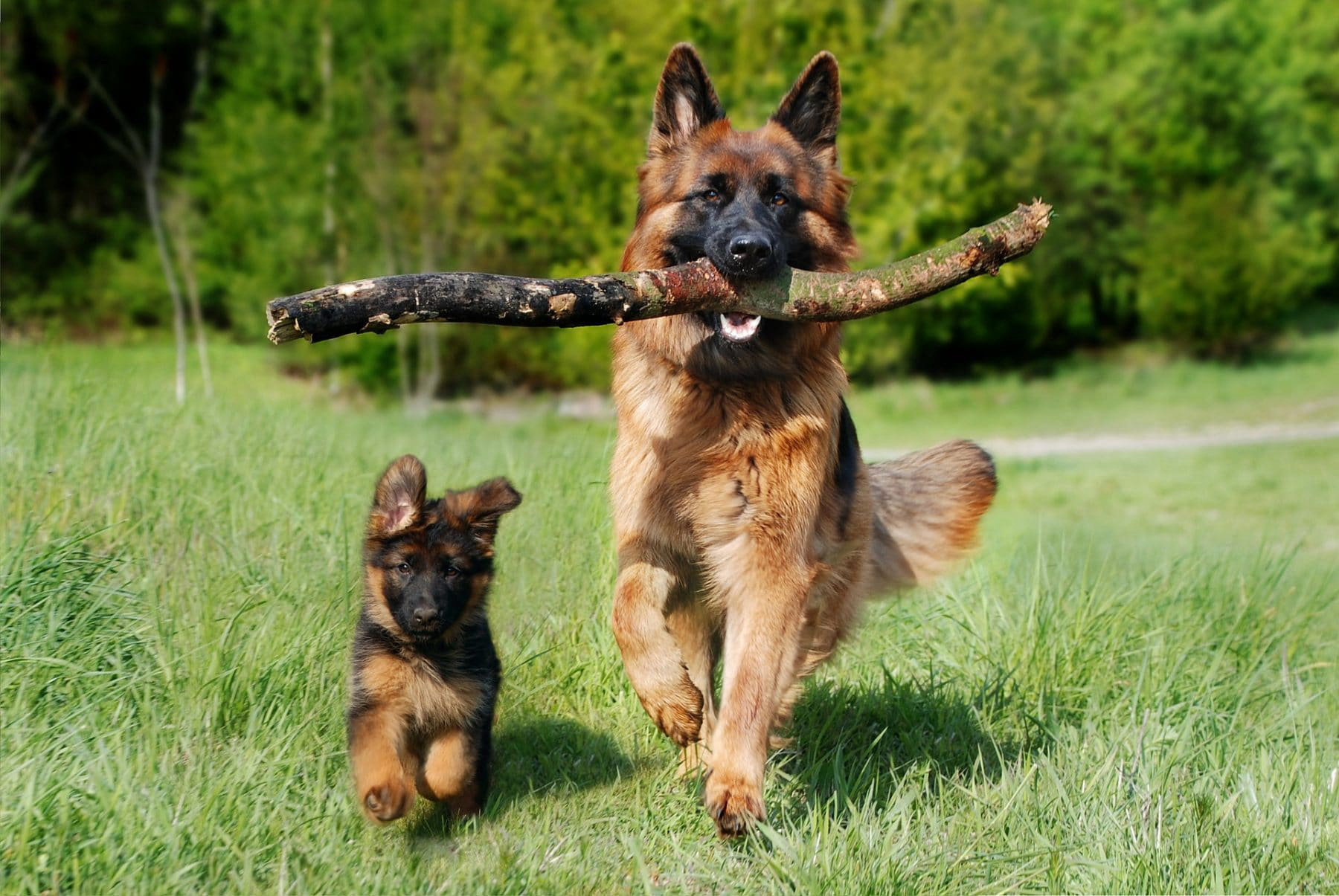
Most Popular Male Dog Names
Looking for the perfect dog name for your new male pup? We have created filterable lists of male dog names from our database of hundreds of thousands of Sniffspot users. You can filter by gender, breed and state to find the most cute, unique and creative male dog names.
Most Popular Female Dog Names
Looking for the perfect dog name for your new female pup? We have created filterable lists of female dog names from our database of hundreds of thousands of Sniffspot users. You can filter by gender, breed and state to find the most cute, unique and creative female dog names.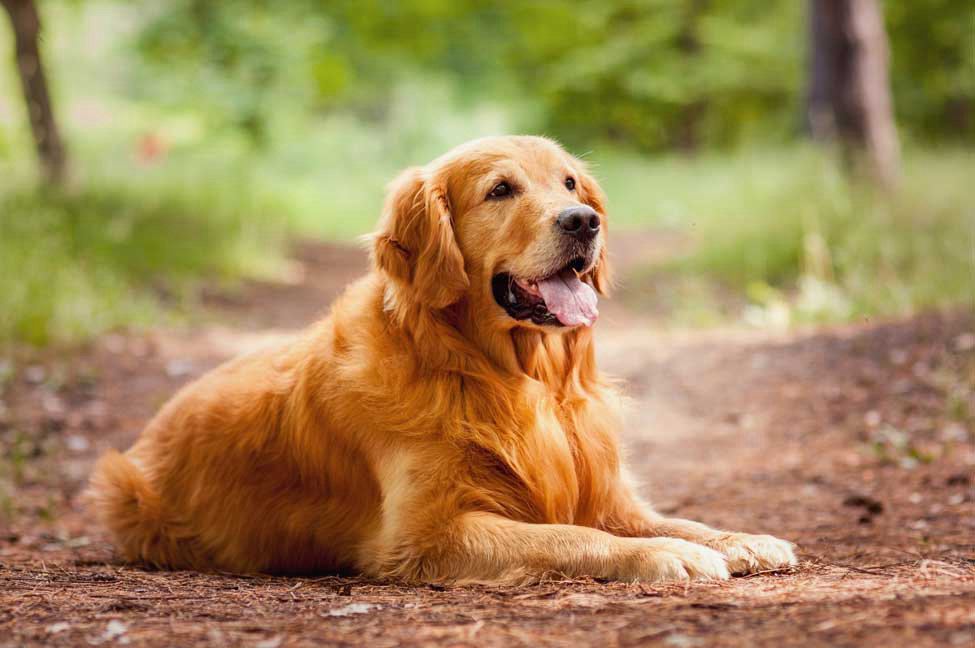
Most Popular Golden Retriever Names
Welcome to our comprehensive list of Golden Retriever dog names, curated from our vast database of Sniffspot users. Filter through hundreds of thousands of options by gender, breed, and state to discover the most adorable, original, and imaginative names for your beloved Golden Retriever.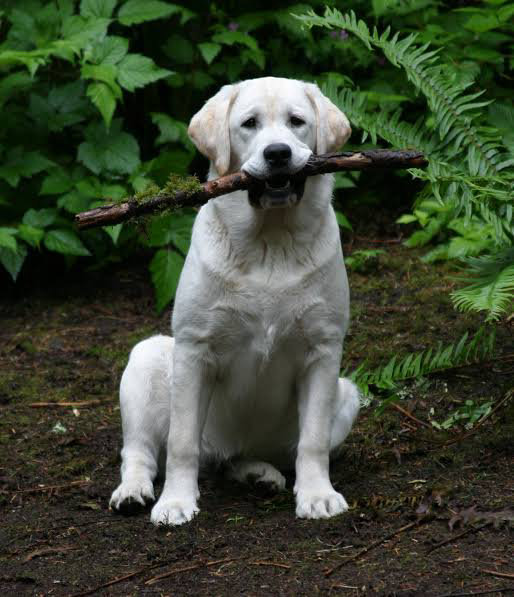
Most Popular Labrador Retriever Names
Welcome to our Labrador Retriever dog names page! Here you can browse through filterable lists of names for your beloved furry friend, ranging from cute and classic to unique and creative options. Our database of hundreds of thousands of Sniffspot users ensures you'll find the perfect name for your Labrador Retriever, whether you're seeking a name for a male or female, based on breed or state.
Top dog rescues in the US

The Best Washington Dog Rescues & Shelters in 2025
This list showcases the top dog rescues & shelters in Washington. These remarkable organizations have been recognized for their unwavering dedication to the well-being of countless dogs.
The Best Oregon Dog Rescues & Shelters in 2025
This list showcases the top dog rescues & shelters in Oregon. These remarkable organizations have been recognized for their unwavering dedication to the well-being of countless dogs.
The Best California Dog Rescues & Shelters in 2025
This list showcases the top dog rescues & shelters in California. These remarkable organizations have been recognized for their unwavering dedication to the well-being of countless dogs.
The Best Florida Dog Rescues & Shelters in 2025
This list showcases the top dog rescues & shelters in Florida. These remarkable organizations have been recognized for their unwavering dedication to the well-being of countless dogs.
The Best New York Dog Rescues & Shelters in 2025
This list showcases the top dog rescues & shelters in New York. These remarkable organizations have been recognized for their unwavering dedication to the well-being of countless dogs.










